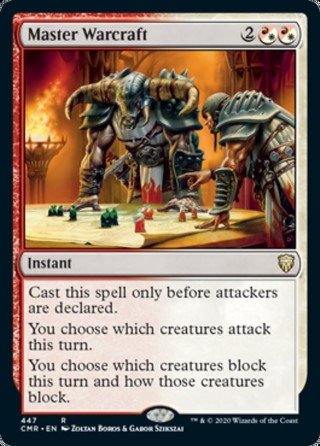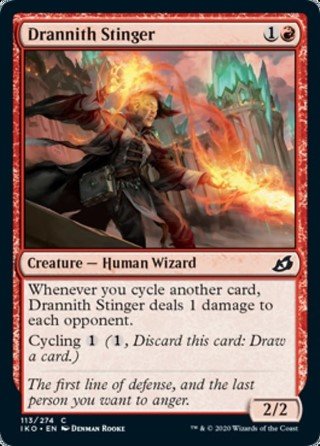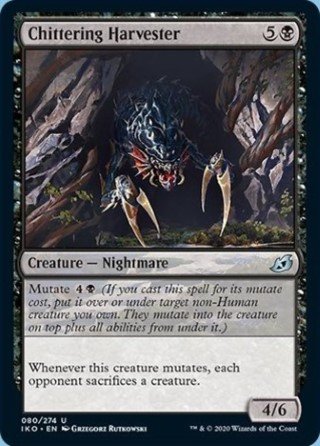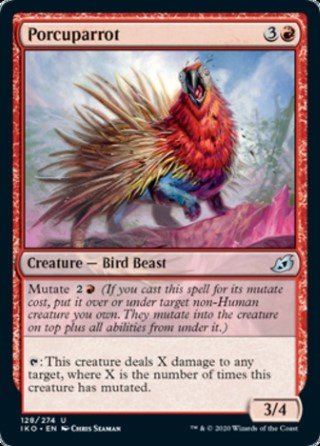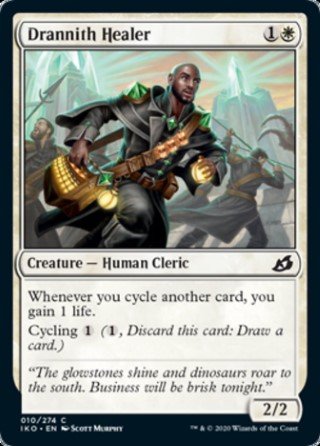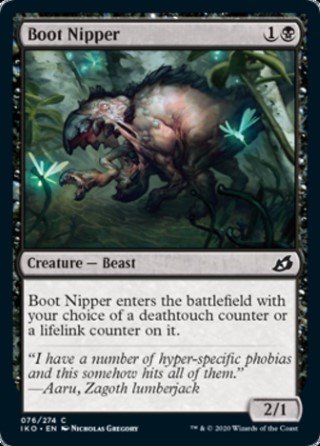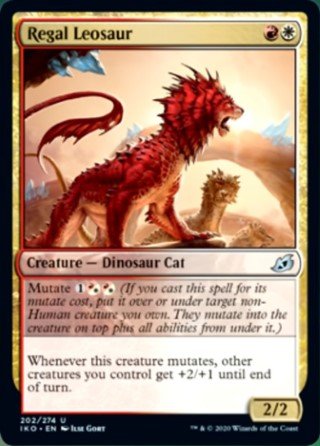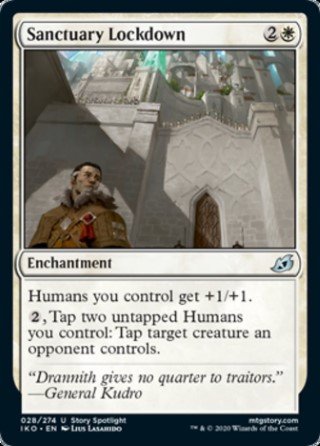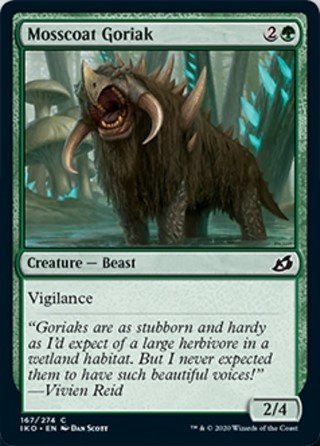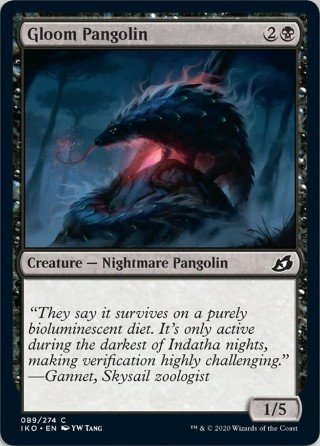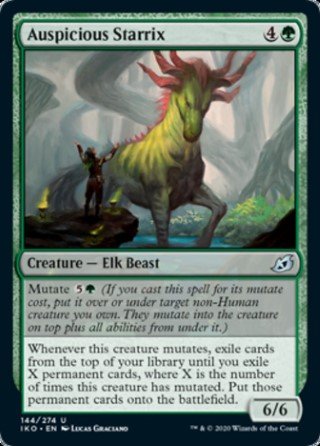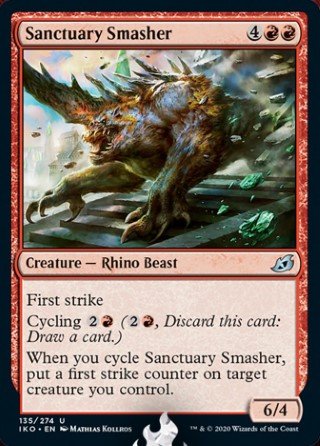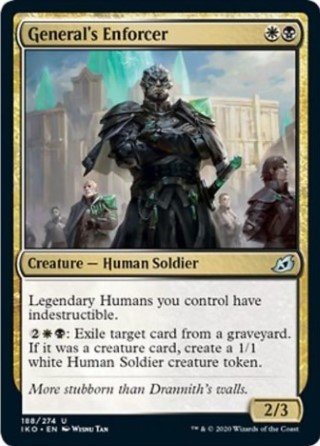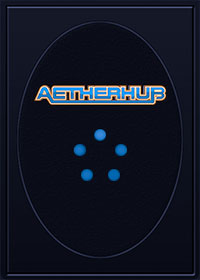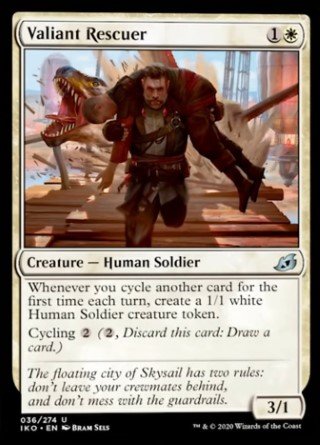Ikoria Limited Strategy: The Viability of Aggro in a World of Kaiju
Cute little guy. Nice to see something so docile amidst all this wilderness. This is probably the only creature in a ten mile vicinity who doesn't look at me like I'm dinner. Must be a resourceful one, this kitty, as he's barely larger than an everyday housecat. Yet somehow, he survives out here. Quick wits to go along with those paws, I suppose.
I bent down to give him a pat on the head. That's the last thing I remember before waking up. Save for the feeling of wind rushing by as a furry swat sent me barreling back several yards. When I regained consciousness, the little brute was gone. I was left with nothing but a headache, raided satchel, and a healthy appreciation for inferiority complexes. He looked small, but he packed a wallop, all right.
Welcome back, humble readers, to my incoherent ramblings about all things magical cardboard!
We've a new set right around the corner, so I felt it proper to start this article off with the warning beacon above. Maned Serval and Solid Footing
and Solid Footing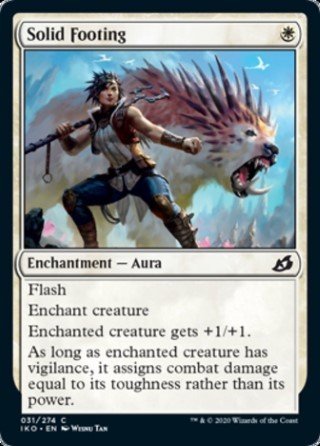 seem innocuous on the surface, but they will end many a game right from the get-go. Turn two: Play the kitty. Turn three: Attack, watch as your opponent shrugs and says "Sure, take it", and proceed to slam Solid Footing
seem innocuous on the surface, but they will end many a game right from the get-go. Turn two: Play the kitty. Turn three: Attack, watch as your opponent shrugs and says "Sure, take it", and proceed to slam Solid Footing . Now your Serval is an effective 5/5 attacking on Turn 3.
. Now your Serval is an effective 5/5 attacking on Turn 3.
This nasty little two card combo is easily assembled. Only a fraction of the set's removal can handle it. Both cards are common. Both in the same color. And in the case of Solid Footing , niche enough that the only person looking to pick these up is the one planning to run the combo. Maned Serval
, niche enough that the only person looking to pick these up is the one planning to run the combo. Maned Serval already starts with high toughness, so Dead Weight
already starts with high toughness, so Dead Weight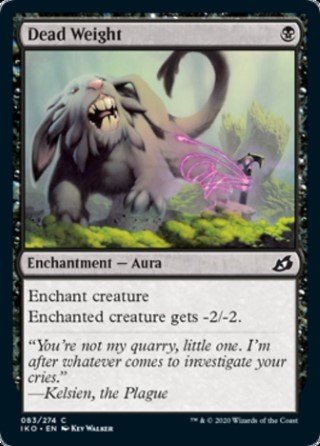 merely skrinks it. Blade Banish
merely skrinks it. Blade Banish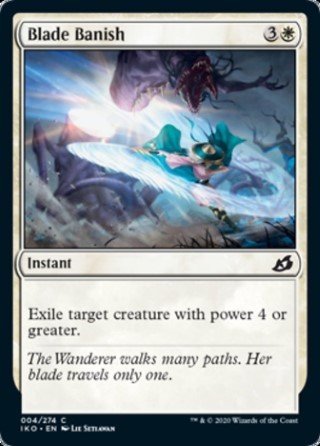 can't touch it, and it's too big for Divine Arrow
can't touch it, and it's too big for Divine Arrow and Fire Prophecy
and Fire Prophecy to take out. Green needs a Fully Grown
to take out. Green needs a Fully Grown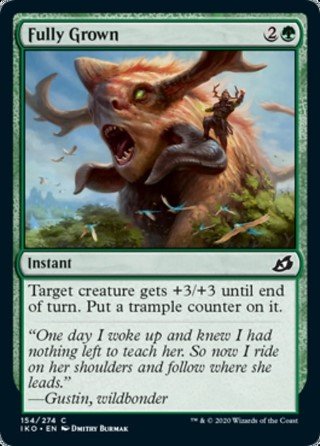 and a 2/2 just to trade. So as you start your prerelease, and future Ikoria drafts, and see your opponent open with a Plains, be ready to spend those Heartless Act
and a 2/2 just to trade. So as you start your prerelease, and future Ikoria drafts, and see your opponent open with a Plains, be ready to spend those Heartless Act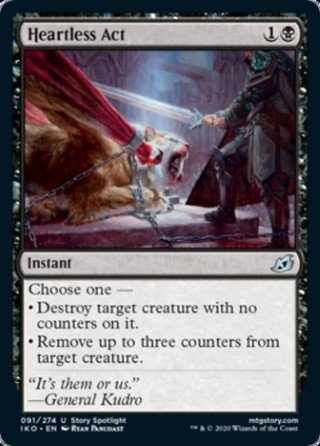 and Pacfism bullets early.
and Pacfism bullets early.
This leads nicely into my theme: Assessing the viability of aggro strategies in Ikoria Limited. What better way to start than describing an aggro deck's dream: a "5/5 on turn 3". And with Vigilance, no less!
Although the darker part of my soul smiles at the notion of countering spells (I'm only human), my first love in Magic was turning critters sideways. Other players may have envisioned themselves adorned in mage's apparel as they slung spells. I was the armor-clad tactician, map in hand, assessing the battlefield like a puzzle to be solved. Where to deploy this unit? When to fire that precious removal at an annoying blocker? Strike hard, strike fast!
One of these guys, I guess.
As a fanboy of aggro-strategies, my first move upon set release is to assess the environment. What tools does it offer up for early combat? What blockades are present to halt attacks? The frequency and power level of both, most especially at the common level, are keys to whether aggressive decks flourish or flounder in a given format.
Today's article asks: Does Ikoria, the land of monstrous Kaiju, offer enough support for aggro to be a viable strategy, or are there simply too many gigantic monsters standing in the way? Are we fast enough to go under the big boys, or are there too many effective blockers? And super-importantly (but all-too-easy to ignore), what synergies exist on either end of the scale?
Step 1: What tools does Aggro have to work with in Ikoria?
Considering its lore, Ikoria lends itself to a large and beastly menagerie. You witness this both in creature types - Beasts, Leviathans, Dinosaurs - and in the set's keywords. Mutate works similar manner to Auras, enhancing something into a more versatile and likely bigger threat. It's an upgrade-mechanic, flavorful and fun, mixing the biology of multiple animals together into a chimerical juggernaut. But like Auras, it's also a 2-for-1 risk if an opponent can remove or nullify it. Potentially even more than that, as lots of Ikoria cards reward multiple mutations onto a single creature. Pacifism is going to do a lot of work in this set, folks. Cycling also returns, now with a whole theme built around it.
is going to do a lot of work in this set, folks. Cycling also returns, now with a whole theme built around it.
Both mechanics point to slowing things down, giving players enough time and card recycling to assemble big old mutated creations. This encourages big, flashy games where it's a race to build the biggest monster. Timmy's of the world, rejoice.
H.P. Lovecraft would be proud
Sounds fun, but it's the opposite of what aggro wants to be doing. The challenge becomes going under all this build-up. Getting a sizable amount of damage and board presence established in early turns, so that by the time the titans start arriving, you're far enough ahead to close things out. How realistic this goal is hinges on what tools we have to work with.
The Creatures:
The core of any aggro deck, we're looking for as much power as we can get for the lowest converted mana costs. Get the troops out and start attacking immediately, clearing away blockers via tricks, or even better, inherently outclassing them stats-wise. When it comes to number crunching, Ikoria's average power level among creatures with mana cost 3-or-less looks like this:
Average Common Power at 3-mana or less
| W=8 | U=6 | B=6 | R=6 | G=6 |
| 1.9 | 1.2 | 1.5 | 2.2 | 1.8 |
Average Uncommon Power at 3-mana or less
| W=6 | U=4 | B=6 | R=2 | G=4 |
| 1.8 | 1.5 | 1.7 | 2.5 | 2.3 |
Combined Average Power at 3-mana or less
| W=14 | U=10 | B=12 | R=8 | G=10 |
| 1.9 | 1.3 | 1.6 | 2.3 | 2.0 |
These tables illustrate the average power of both common and uncommon creatures with a converted mana cost of 3 mana or less. These are the creatures we want to prioritize, so it's key to know what each color offers in terms of power output. Next to each color is the sample size, the number of creatures included, so "U = 6" means Blue has access to six creatures that fit this criteria. The average power of those creatures is then displayed below.
Note: I'm not including Rares and Mythics in the above numbers, as while Lavabrink Adventurer and co. would be welcome in our deck, the Commons and Uncommons are the real bread and butter. It's their quality and quantity that'll foretell a deck's odds of success. Also, while I did include cheaper members of the the Hybrid "Bonder" cycle in the chart above, I did not include Multicolor creatures, as their odds of inclusion in a given deck are obviously far lower than any single-colored creature. We'll talk about them individually later, though.
Quantity-wise, we see the highest number of weenies centered in White, followed by Black and Green. Small creatures are in White's wheelhouse, so that's no surprise. Green's also no shocker, being the creature-centric color. Black tends to sway Controlling much of the time, but here I'm guessing the Human synergies (Mainly White/Black in this set) propped up the opposite angle. Surprisingly, the typically aggressive Red only got eight total creatures that fit the bill, fewer than Blue! When one thinks aggro, Red is one of the first colors to jump to mind. But Ikoria seems to break from that tradition, so on the basis of sheer numbers, Red doesn't offer a lot of creature support on its own.
When it comes to quality (more power!), Red does seem to offer up the biggest bang for your buck, but that's likely due to small sample size and the presence of Frenzied Raptor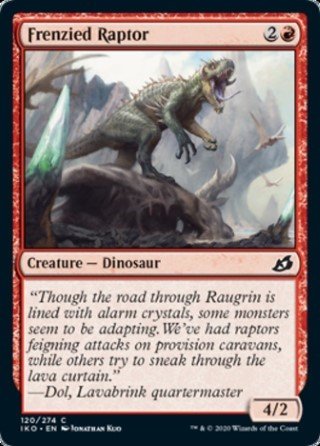 . That puts White and Green on top, with Black slightly behind. Importantly, both White and Green offer up common creatures with 3 power at three mana or less (Savai Sabertooth
. That puts White and Green on top, with Black slightly behind. Importantly, both White and Green offer up common creatures with 3 power at three mana or less (Savai Sabertooth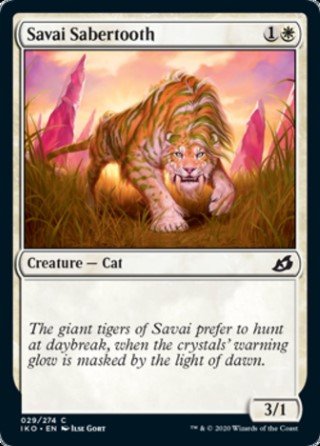 ,Excavation Mole
,Excavation Mole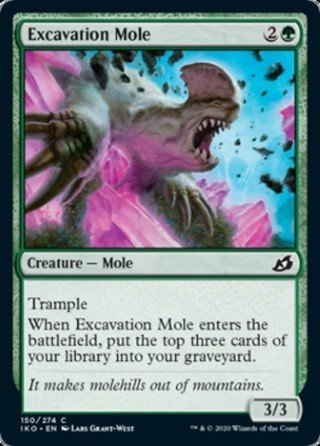 ). Overall, I get the impression that Blue is totally controlling. Big surprise there. White, Black, and Green seem best suited to support Aggro when it comes to creatures.
). Overall, I get the impression that Blue is totally controlling. Big surprise there. White, Black, and Green seem best suited to support Aggro when it comes to creatures.
Next, let's see what backup we can come up with.
The Support Spells:
Our creatures get outclassed quickly, so we'll need spell support to remove opposition and get the team in for damage. Though Red doesn't offer many creatures to work with, it does provide a solid amount of Common and Uncommon supporting spells. Fire Prophecy is an excellent removal spell that can rummage us into additional creatures. [pRaking Claws]] is the sort of trick that can swing combat, but is most attractive when used on an unblocked creature. Gotta love the flexibility of Cycling, though I believe you'll most often want the doublestrike. Heightened Reflexes
is an excellent removal spell that can rummage us into additional creatures. [pRaking Claws]] is the sort of trick that can swing combat, but is most attractive when used on an unblocked creature. Gotta love the flexibility of Cycling, though I believe you'll most often want the doublestrike. Heightened Reflexes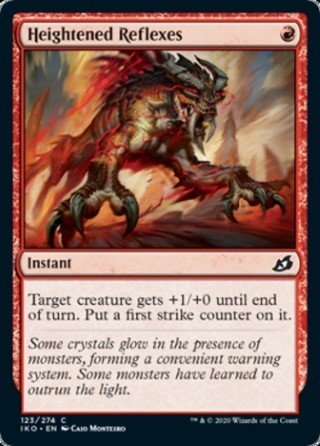 provides a solid amount of value for a single mana, likely winning you combat and making the creature harder to block moving forward. Rumbling Rockslide
provides a solid amount of value for a single mana, likely winning you combat and making the creature harder to block moving forward. Rumbling Rockslide is expensive, but will do the job. And Flame Spill
is expensive, but will do the job. And Flame Spill will be absolutely key to provide an aggro deck with a bit more damage reach.
will be absolutely key to provide an aggro deck with a bit more damage reach.
I'm not big on Solid Footing outside of the aforementioned combo, the but relative ease of putting said combo together does make it attractive. I'm also not confident Light of Hope
outside of the aforementioned combo, the but relative ease of putting said combo together does make it attractive. I'm also not confident Light of Hope really does enough to warrant inclusion. Spontaneous Flight
really does enough to warrant inclusion. Spontaneous Flight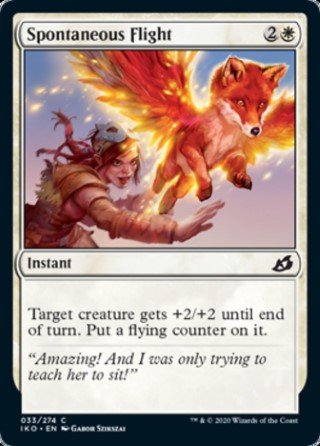 , Blade Banish
, Blade Banish , Pacifism
, Pacifism , and Fight as One
, and Fight as One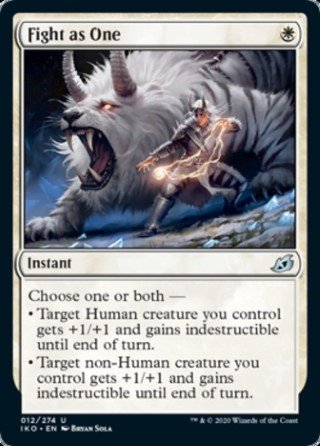 are more like it. And though slower, Divine Arrow
are more like it. And though slower, Divine Arrow and Swallow Whole
and Swallow Whole are certain efficient, giving White an overall flexible arsenal. Of high importance is Coordinated Charge
are certain efficient, giving White an overall flexible arsenal. Of high importance is Coordinated Charge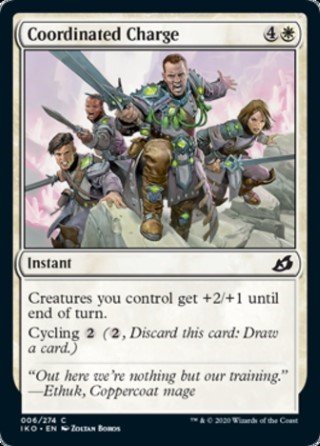 , especially if W/B Humans Go-Wide is a big archetype. On that note, black has access to fantastic removal: Heartless Act
, especially if W/B Humans Go-Wide is a big archetype. On that note, black has access to fantastic removal: Heartless Act , Dead Weight
, Dead Weight , Blood Curdle
, Blood Curdle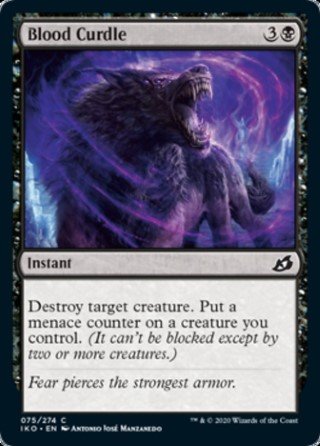 , Easy Prey
, Easy Prey . It also has a solid offering of combat tricks in Unlikely Aid
. It also has a solid offering of combat tricks in Unlikely Aid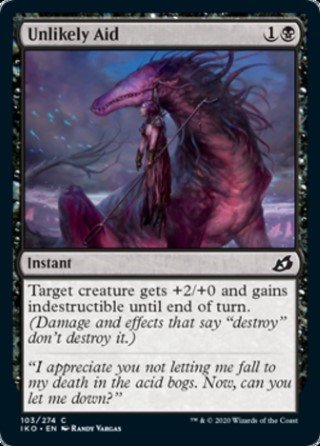 and Suffocating Fumes
and Suffocating Fumes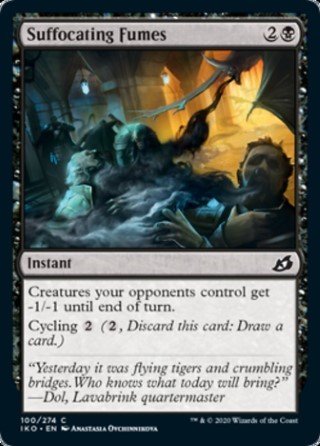 .
.
Lastly, Green's main contribution sticks to creatures, as it only offers Fully Grown , Ram Through
, Ram Through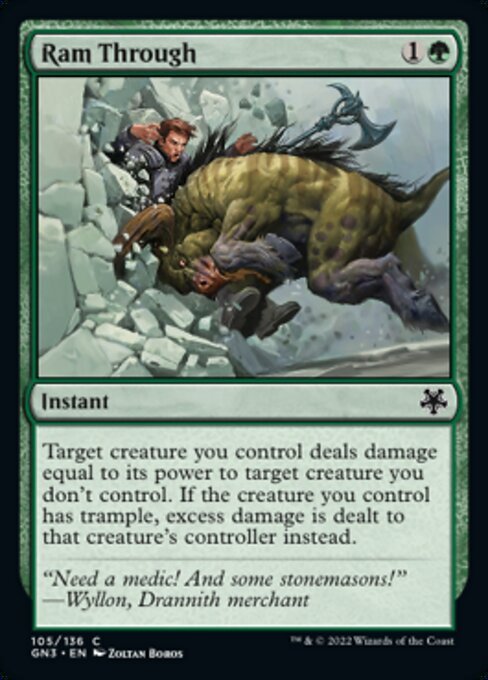 , and maybe Thwart the Enemy
, and maybe Thwart the Enemy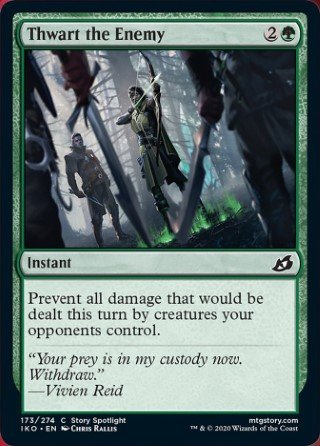 for tricks/removal. Sudden Spinnerets
for tricks/removal. Sudden Spinnerets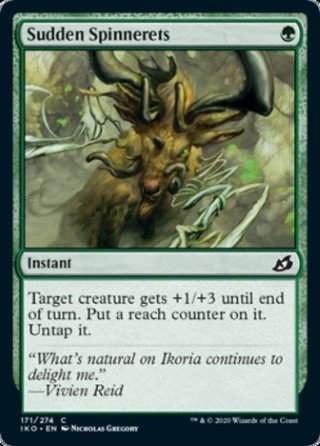 is far more of a defensive card. This tells me that if you were to pilot an aggro deck with Green, you'd likely look to other colors for spell support.
is far more of a defensive card. This tells me that if you were to pilot an aggro deck with Green, you'd likely look to other colors for spell support.
The Synergy:
Creatures and spells do not exist in a vaccuum. Overall power/toughness and spell efficiency are largely influenced by the synergies running around a given set. It's the reason Glory Seeker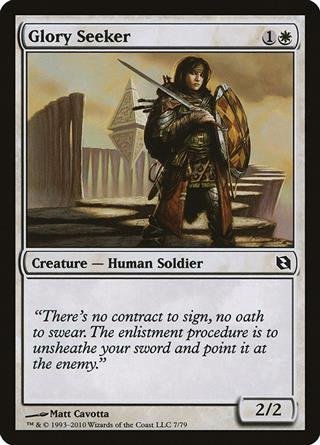 was great in Onslaught draft but unplayable in Rise of the Eldrazi.
was great in Onslaught draft but unplayable in Rise of the Eldrazi.
With aggro strategies in Ikoria, I'm concerned about the set's mild tribal angle. So far, our main aggro colors appear to be White, Black, and Green. Each supports both Human and non-Human synergies. It's important to bear the balance in mind, depending on which colors you run. Green leans more towards non-human, while White and black lean more Human. But not entirely. You'll often find yourself with a handful cards that support both. It's too early to call, but I'm hoping this "fusion-tribal" layout doesn't create inconsistency. If so, it'll make it difficult for effective aggro decks to really come together, as the synergistic-strength could be diluted out.
Step 2: What is our opposition in Ikoria?
The Creatures:
We've reviewed our tools. But that's only half the story. Just as key to aggro success is the quantity and quality of defending troops. If we can't punch through early and often, we're doomed.
Combined Average: Common/Uncommon Toughness at 3-Mana or Less
| W=14 | U=10 | B=12 | R=8 | G=12 |
| 2.4 | 2.8 | 2.2 | 2.3 | 2.8 |
Does that mean aggro isn't viable? Not necessarily. We're not in Rise of the Eldrazi territory quite yet. It just means aggro needs to recognize that efficient blockers like Aegis Turtle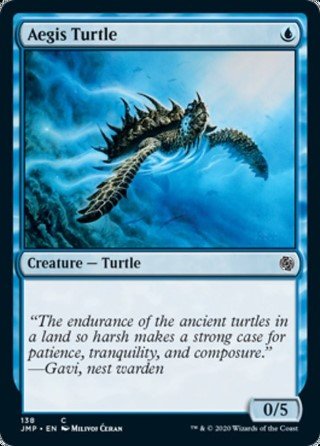 and, ironically, Maned Serval
and, ironically, Maned Serval make our ability to punch through more difficult. Ikoria has no shortage of big threats, and if said threats start to stick, we're in serious trouble. As such, making aggro effective means negating as much early defense as possible, so we'll likely need to rely on tricks and synergy to make up for the power imbalance. Squeezing as much value as possible out of Fight as One
make our ability to punch through more difficult. Ikoria has no shortage of big threats, and if said threats start to stick, we're in serious trouble. As such, making aggro effective means negating as much early defense as possible, so we'll likely need to rely on tricks and synergy to make up for the power imbalance. Squeezing as much value as possible out of Fight as One , Perimeter Sergeant
, Perimeter Sergeant , and Essence Symbiote
, and Essence Symbiote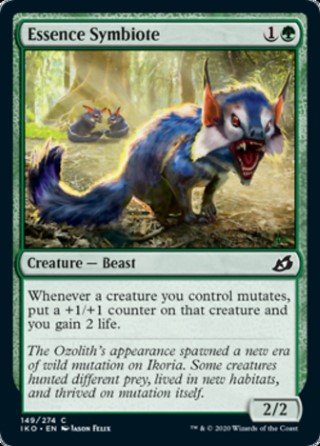 will be paramount. As mentioned, there are conflicting tribal synergies, so a first step will be determining the right creature type balance in whatever colors you go for. Not a good sign. Every color features a higher average toughness over power at 3-mana or less, save for Red, which is tied. So what does this mean? Well, it means we have an uphill battle, as the average cheap creature is more durable than it is damaging. We'll be up against some potentially formidable blockers. This isn't surprising, given the slower speed the set wants to operate at. As mentioned, Mutate and Cycling are slower, grindy mechanics that time function at their best. We shouldn't be surprised Wizards offered each color enough defense to make it further into the game.
will be paramount. As mentioned, there are conflicting tribal synergies, so a first step will be determining the right creature type balance in whatever colors you go for. Not a good sign. Every color features a higher average toughness over power at 3-mana or less, save for Red, which is tied. So what does this mean? Well, it means we have an uphill battle, as the average cheap creature is more durable than it is damaging. We'll be up against some potentially formidable blockers. This isn't surprising, given the slower speed the set wants to operate at. As mentioned, Mutate and Cycling are slower, grindy mechanics that time function at their best. We shouldn't be surprised Wizards offered each color enough defense to make it further into the game.
The Support Spells:
There's also a multitude of relatively inexpensive removal spread out among the colors. White packs Divine Arrow , Pacifism
, Pacifism , and Swallow Whole
, and Swallow Whole (most of our troops will be too small for Blade Banish
(most of our troops will be too small for Blade Banish to hit). Blue has Essence Scatter
to hit). Blue has Essence Scatter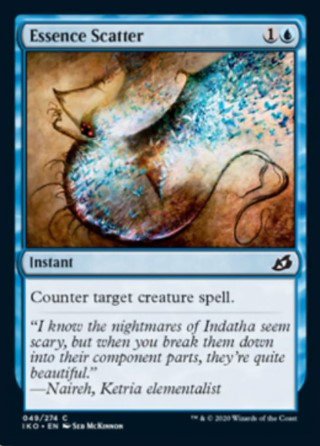 , Capture Sphere
, Capture Sphere , and Mystic Subdual
, and Mystic Subdual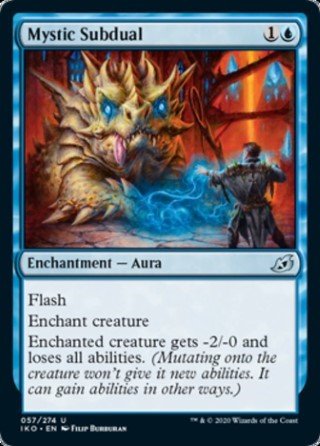 , which may as well be a removal spell against us. Black brings Dead Weight
, which may as well be a removal spell against us. Black brings Dead Weight , Blood Curdle
, Blood Curdle , and Heartless Act
, and Heartless Act , all very clean and direct removal with little targeting restriction. Yes, it does contain Mutual Destruction
, all very clean and direct removal with little targeting restriction. Yes, it does contain Mutual Destruction and Blitz Leech
and Blitz Leech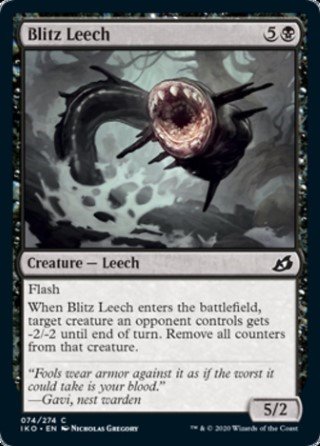 , too, but the first card requires a body to feed it and is better suited at taking down larger threats. And by the time the Leech comes down, we've hopefully done enough damage and have enough board presence that it's too late. Red uses the aforementioned Fire Prophecy
, too, but the first card requires a body to feed it and is better suited at taking down larger threats. And by the time the Leech comes down, we've hopefully done enough damage and have enough board presence that it's too late. Red uses the aforementioned Fire Prophecy , Flame Spill
, Flame Spill , Rumbling Rockslide
, Rumbling Rockslide , and the back-breaking Clash of Titans
, and the back-breaking Clash of Titans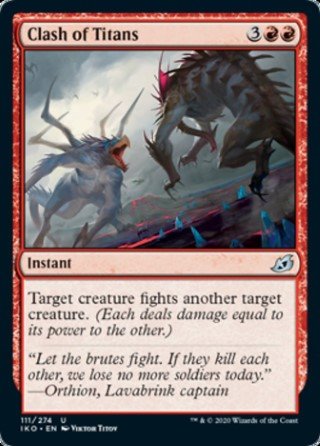 . Finally, green gets Ram Through
. Finally, green gets Ram Through and Sudden Spinnerets
and Sudden Spinnerets to make life difficult. That's at least 2-3 answers per color across common and uncommon, so every deck is likely to pack a solid 4-5 removal spells.
to make life difficult. That's at least 2-3 answers per color across common and uncommon, so every deck is likely to pack a solid 4-5 removal spells.
The Synergy:
The late game is fairly straightforward: Our opponent lives long enough, the kaiju start coming to town. This makes things miserable for our small band of speedsters. An aggro deck can typically determine if it'll win or lose the game by turn 4, and Ikoria oughta illustrate that well. Midgame, much larger threats are present in abundance. Creatures get harder and harder to deal with on the turns go on. Mutate might be a saving grace, potentially setting us up for card advantage if we use our removal carefully. Unlike Bestow (Ex. Hopeful Eidiolon), if a mutated creature is killed, all the cards stuck to it go to the graveyard. If an opponent gets greedy and decide to go all Voltron on us, even a single removal spell could make all the difference.
Step 3: Where do we go from here?
Can we outrace blockers and overcome this degree of removal? Are there too many blocker to leap before Godzilla arrives and stomps us to oblivion? Things seem dire to start with, but perhaps there are some loop holes available? I've always been a fan of the underdog, after all.
In Part 2, we'll explore specific cards, archetypes, and themes that could possibly allow aggro to overcome these obstacles. This is just a first impression, and oftentimes the finer interactions of a set don't reveal themselves until we start playing with it. Thus far, Ikoria appears to be slower format, unkind to aggro. But we're not giving up yet. Let's dig deeper.
Stay tuned, and hope you enjoyed reading!
-Tautog-

